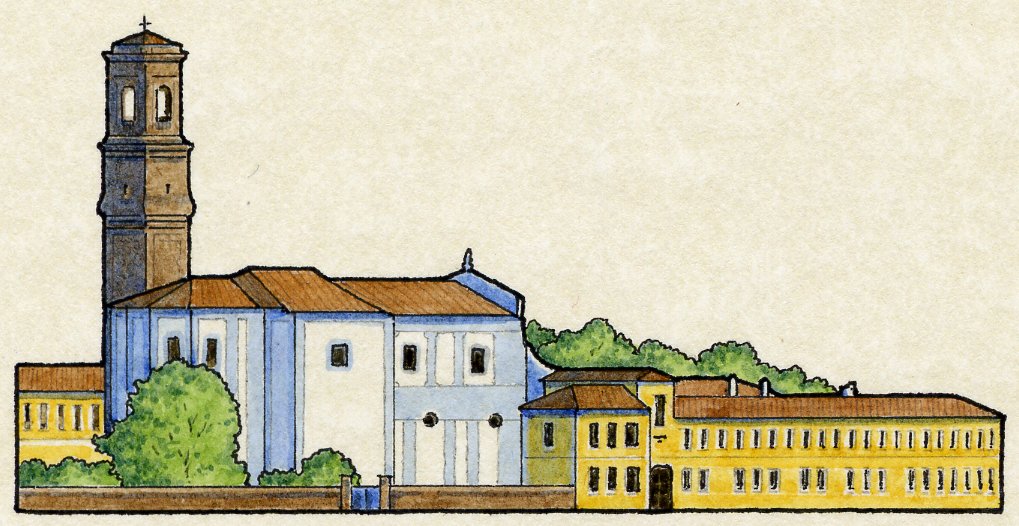Description

Exited from
the abbey, on our right we can admire the bell tower, almost 50 meters
high,
that was realized in three years of work, from 1723 to 1725, following
the idea
of the architect Pietrasanta. This bell tower is on the right of the
church as
the tradition of the cistercian churches in 1700.. We started to talk
about the
new bell tower in 1708. In 1710 a big part of the tower was already
built,
following the idea of Federico
Pietrasanta, but the bell tower would be finished in 1723.
The six bells were put in 1740,and they had
been playing for 60 years but because of the French Revolution they
were sold
to the sanctuary of Saronno and the abbey was closed. Pietrasanta was
surely
one of the most illustrious architect that had worked in the monastery
of
Parabiago, and the refined bell tower is the proof. The floor are
divided by
elegant architectonic modulations and rounded frame. This elements
create a
delicate light game, and seems a specific choice to had let the masonry
vestment visible, like an imaginary connection to the traditional
Gothic
architecture of
We
carry on until seeing the two emblems on the facade of the church
The
actually church is the third one realized in the place where the
tradition
wants the apparition of Saint Ambrogio. It was built in just 5 years,
from 1708
to 1723, and it was ordered by the architect of Milan Quadrio. It's
presented
in the same way it was realized in the '700. On the facade in
new-classical
style, above the porch, the Cistercians made: on the right the emblem
of
Visconti (founders of the church and protagonists in the battle), and
on the
left the emblem of
The
facade is set up in the low part by a
central porch marked by pilasters and fornicates, true arch triumphal
which
brings inside the church.
The masonry
parameter outdoor is marked by simple architectonic
scores which remind to the intern
organization of the nave with a surfaces modulation clear and
systematic.
If the
church is open we enter and listen track number 10.4, if not skip over
track
10.5.




